After a few years in the videogame (FINAL FANTASY X, TOMB RAIDER 5) and french movies (Vidocq, Asterix Mission Cleopatra) Nicolas Aithadi took on the Londonian Adventure and joined The Moving Picture Company and worked on such projects as TROY, ALEXANDER, CHARLIE AND THE CHOCOLATE FACTORY. He is now working on the next installment of the HARRY POTTER franchise
What got you where you are?
I started as an illustrator, when I was younger. I was working for newspaper like Force Ouvriere Hebdo etc… I jumped to the digital when I met people who offered me to work for Science et Vie Micro, a french Magazine dedicated to Computers. I started to create their Interactive CDs that they were giving away with the magazine. From there I worked my way towards commercials then later on film work. In 2002, The Moving Picture Company contacted me and offered me a job as a TD. I accepted gladly and I work there ever since. My first job was lead Animator on THE MEDAILLON, then sequence supervisor on TROY, CG sup on ALEXANDER and finally arrived to my goal. VFX Supervisor on the last X-MEN.
How did you become VFX Supervisor on Harry Potter?
MPC has always been part of the Potter series since the beginning, it was just a matter of time for me to get involve. My first experience was on “THE GOBLET OF FIRE” as a CG Sup. I like the kind of effects we have to create for these films. It’s always different and often very challenging. There is no time to get bored. After Roland Emmerich’s 10 000 BC, I was offered the opportunity to work of “THE HALF-BLOOD PRINCE”. As I always wanted to get back to the Potter world I took the job.
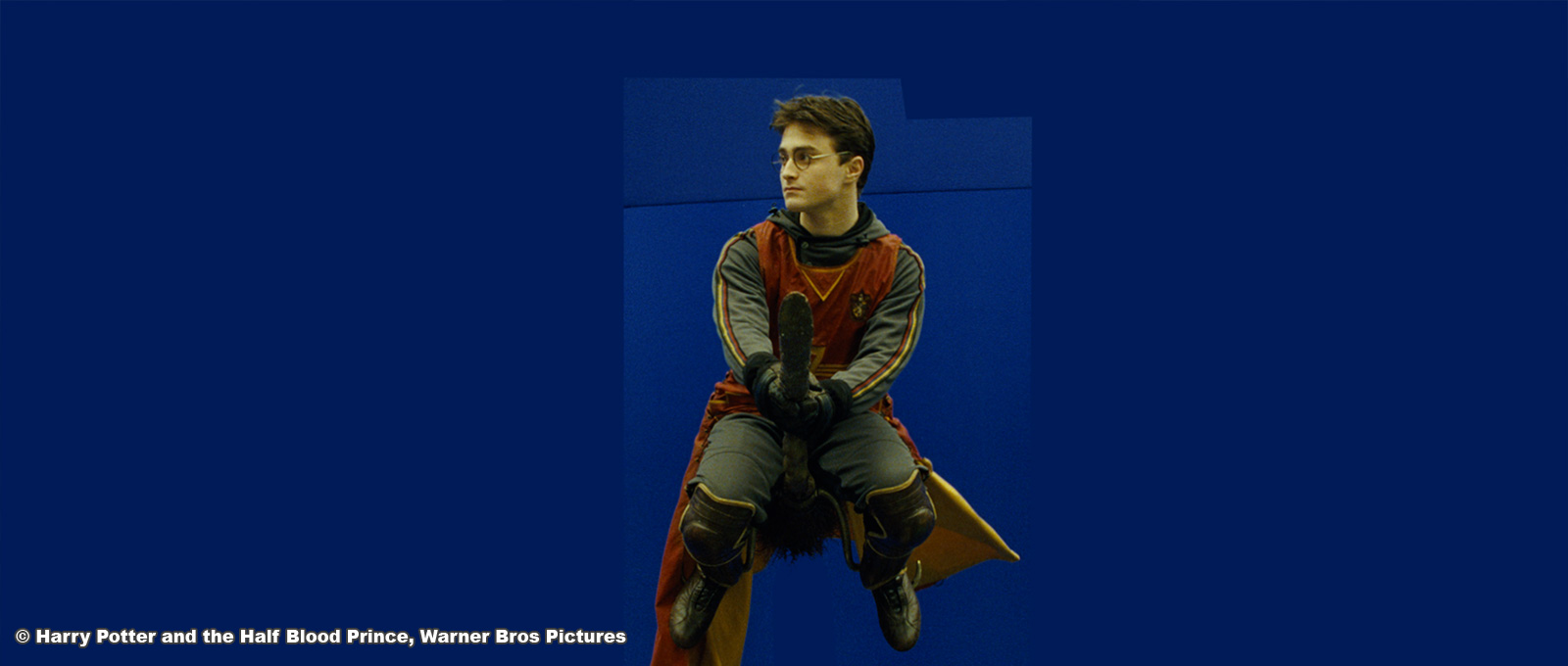 |
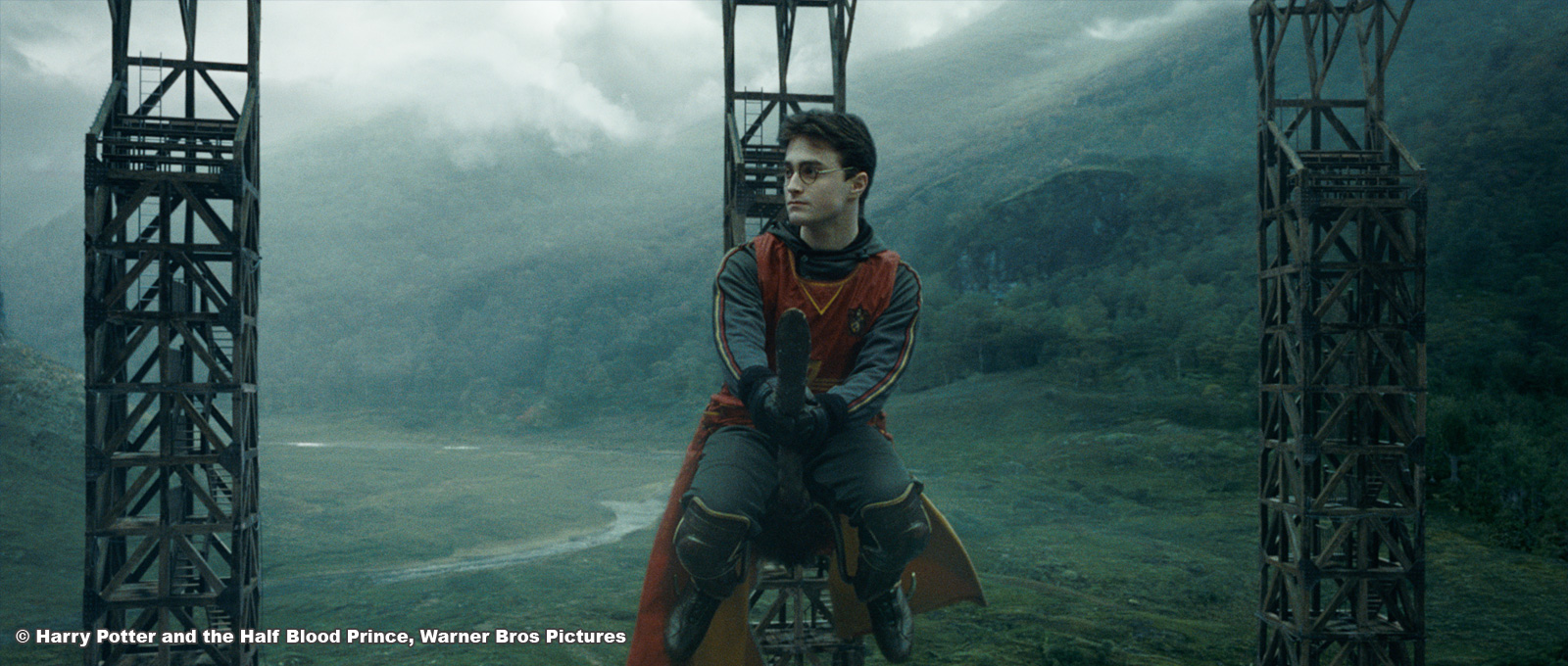 |
Almost every studios in London worked on The Half Blood Prince, which sequence MPC was in charge of?
For this Potter we were primarily in charge of the two Quidditch sequences as well as other various effects across the film.
Can you tell us a bit more about it?
Other effects included an ice skating snowman, floating burning Newspaper, shot of the Hogwart Express. including a camera traveling from inside the train going outside a window and getting back in two carriage away, a shot that took something like six months to finalise. Another massive shot was the apparating; The idea was that Harry and Dumbledore use Magic to travel and their bodies are deformed and stretched and fuse with one another. We had to build a Digital double of Harry and Dumbledore that could work very close to camera and to find a technique to melt and fuse the bodies. We were pressed with time so we decided to make this shot the Old School way and to model pretty much everything. It was like making stop motion animation with CG. The shot was modeled every five frames.
Did you use a lot of digital doubles for the Quidditch sequences?
Pretty much all the shots of both sequences have some kind of digital doubles.
The idea was that from the moment a character will move we would switch to a digi-double. The Shot where Ginny is doing a barrel roll for instance was entirely digital, from the environment to the characters. We’ve done a big job on the shading and facial animation to be able to create the best digi-doubles possible. We used what we called videogrammetry. We had an actor sitting on a chair with four camera pointed at him/her two in front, one aiming low, the other one aiming high and one on each side.
The actors had tracking markers on their faces and we had a very flat lighting setup. Once we’ve shot those element we used the four plates to created animated UV textures that were perfectly synched to the facial tracking point that we were using to animate the CG faces. The lighting being so flat we were able to light and shade them like traditional textures.
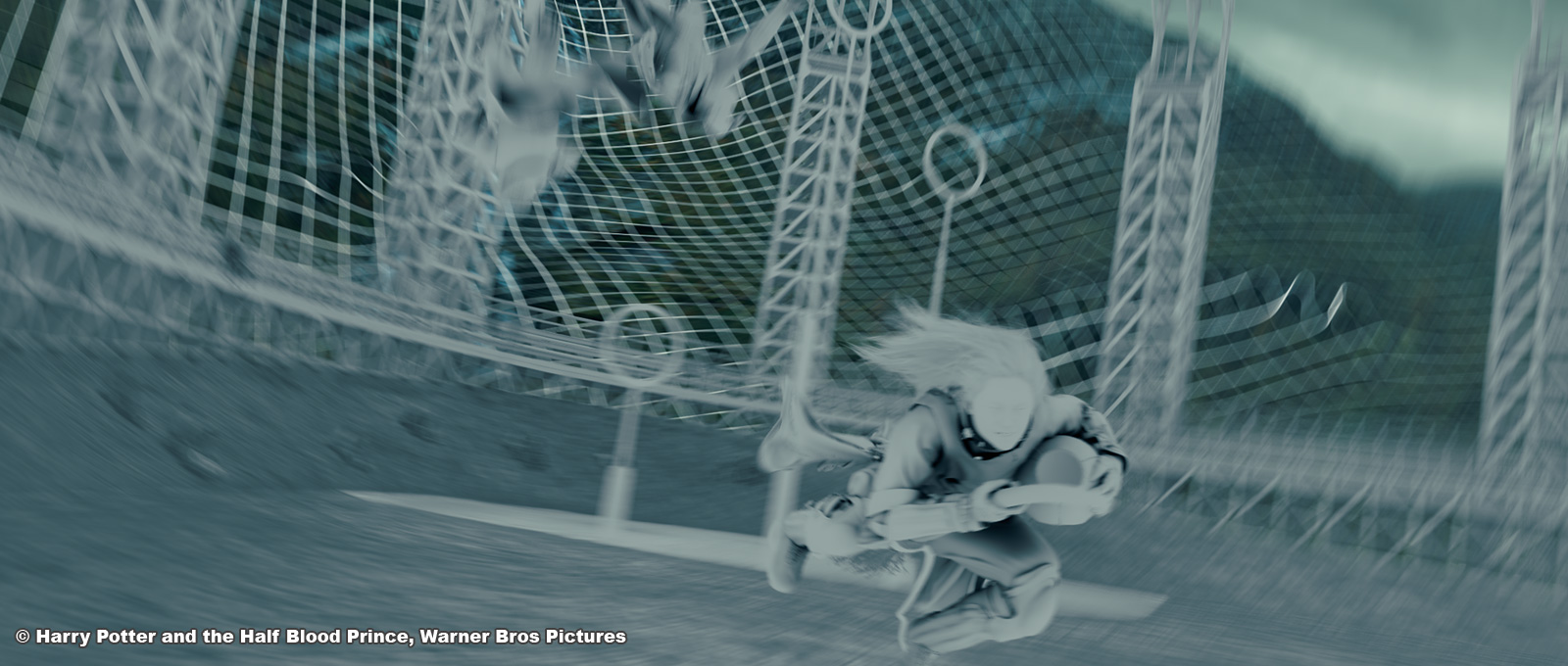 |
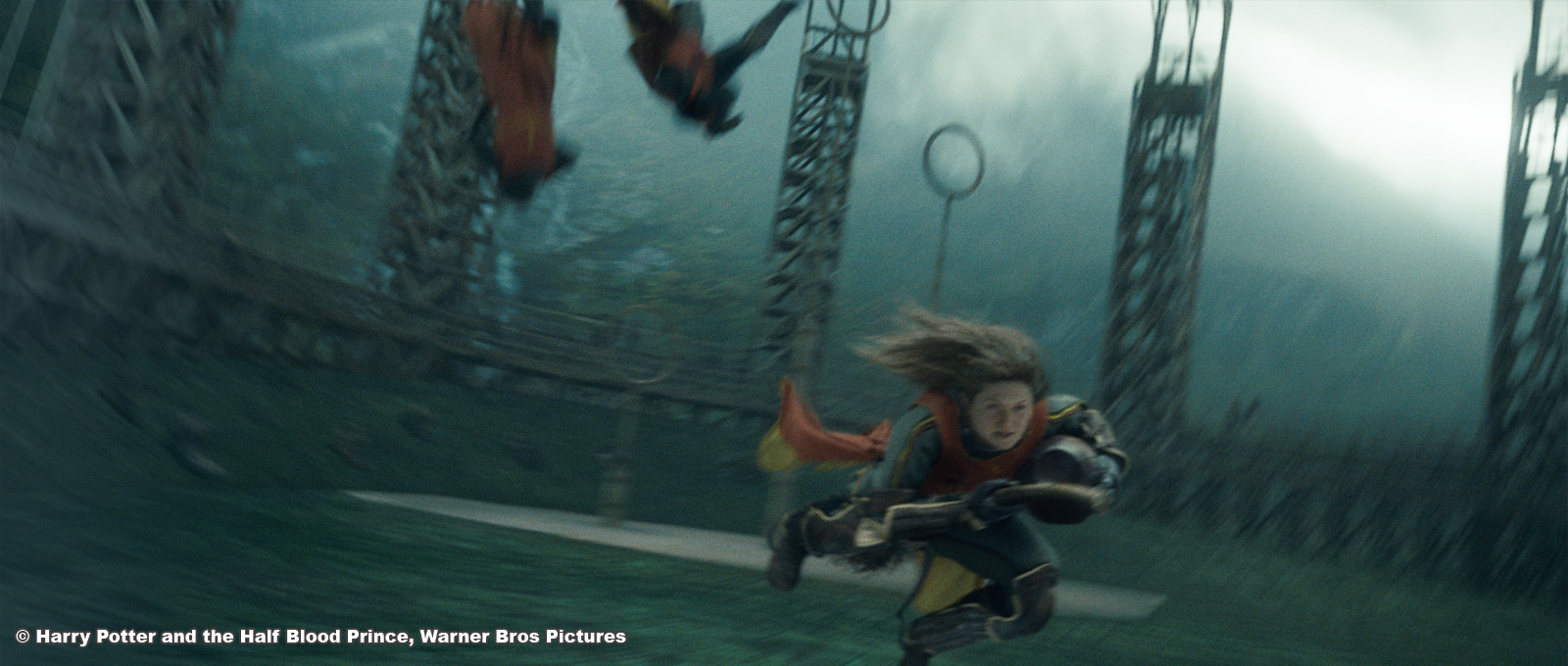 |
Did you use miniatures?
Not for the Quidditch sequences, except for the school in the distance, but even then we re-projected it on CG models for better control.
What’s a typical day on Harry Potter?
My days become very quickly the same routine. In the morning we have a production meeting where my VFX Producer, CG Supervisor, 2D Supervisor and myself meet and discuss things to be achieved during the day, after that pretty much for the rest of the day I do what we call dailies, which are reviews of the work that the various departments have done the previous day or week depending on the department. The purpose of these reviews and of my job is to ensure that we are on track in term of deadline and budget and artistically.
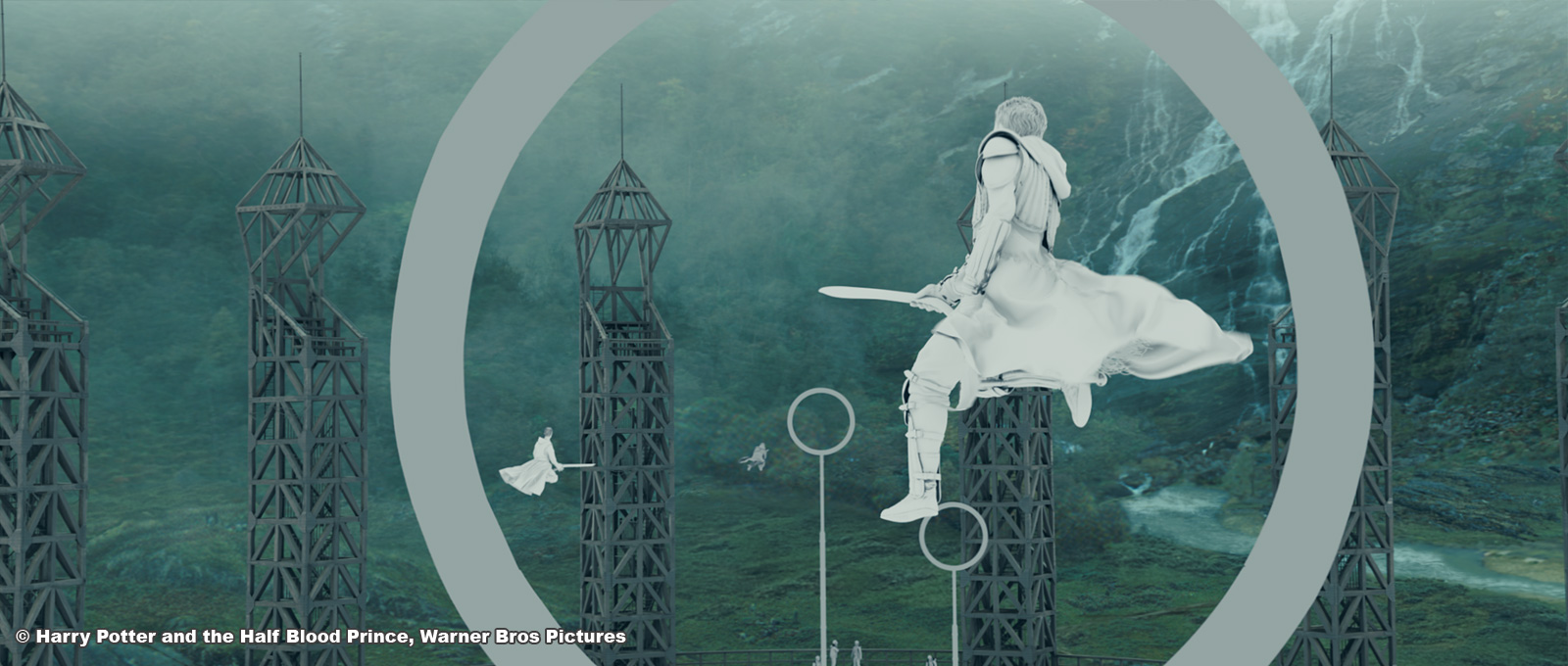 |
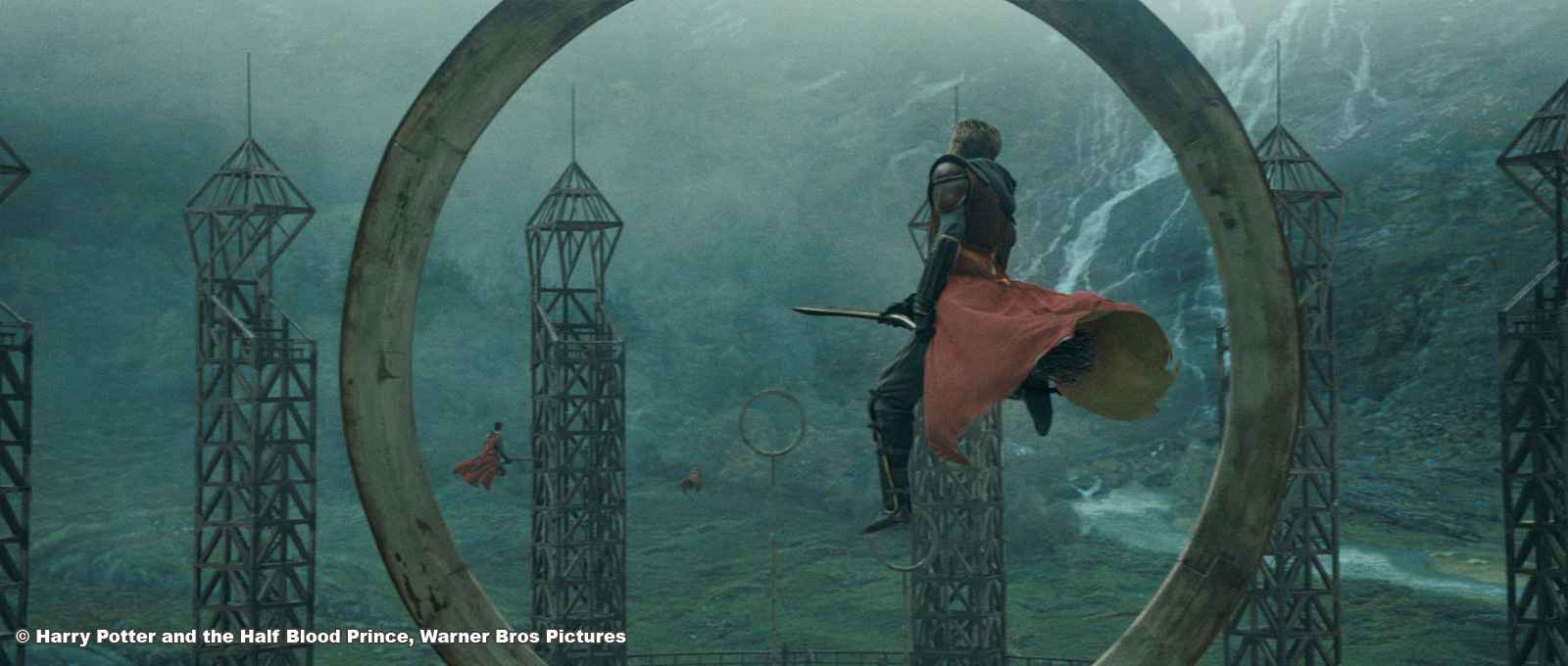 |
What were the challenges on this particular Potter?
As I said before, the challenge was the digital double work for the Quidditch sequences. Not only the facial animation and rendering had to be improved we had to deal with CG hair and CG cloth of extremely high resolution. In addition to that we had to create full CG environments. It was intense. 100% of the shots have some kind of CG in them and maybe 90% are entirely CG. What we wanted to achieve was to make the Quidditch sequence more dynamics than it ever been and for that the solution was to free up the camera.
What was the size of your team?
A little under a hundred, maybe 80 or 90 artists.
How many shots MPC worked on?
We were in charge of about 250 shots. Not a massive number in comparison to what MPC handles on a regular basis, but they were complicated shots.
What were the main technical changes since the last Potter?
We worked on the characters a lot, developing skin shaders and facial animation tools. We developed FX animation as well with massive work on Fire and water. MPC is always developing proprietary tools, we have our Fur system called Furtility, which was started on BC and improved on PRINCE CASPIEN, which we used for the Quidditch player’s hair. We have a amazing rigid body dynamics tool called PAPI and our rendering Pipeline Tickle.
How long lasted the project?
It usually takes a year of work for a Potter. Big part of that is shooting and prep.
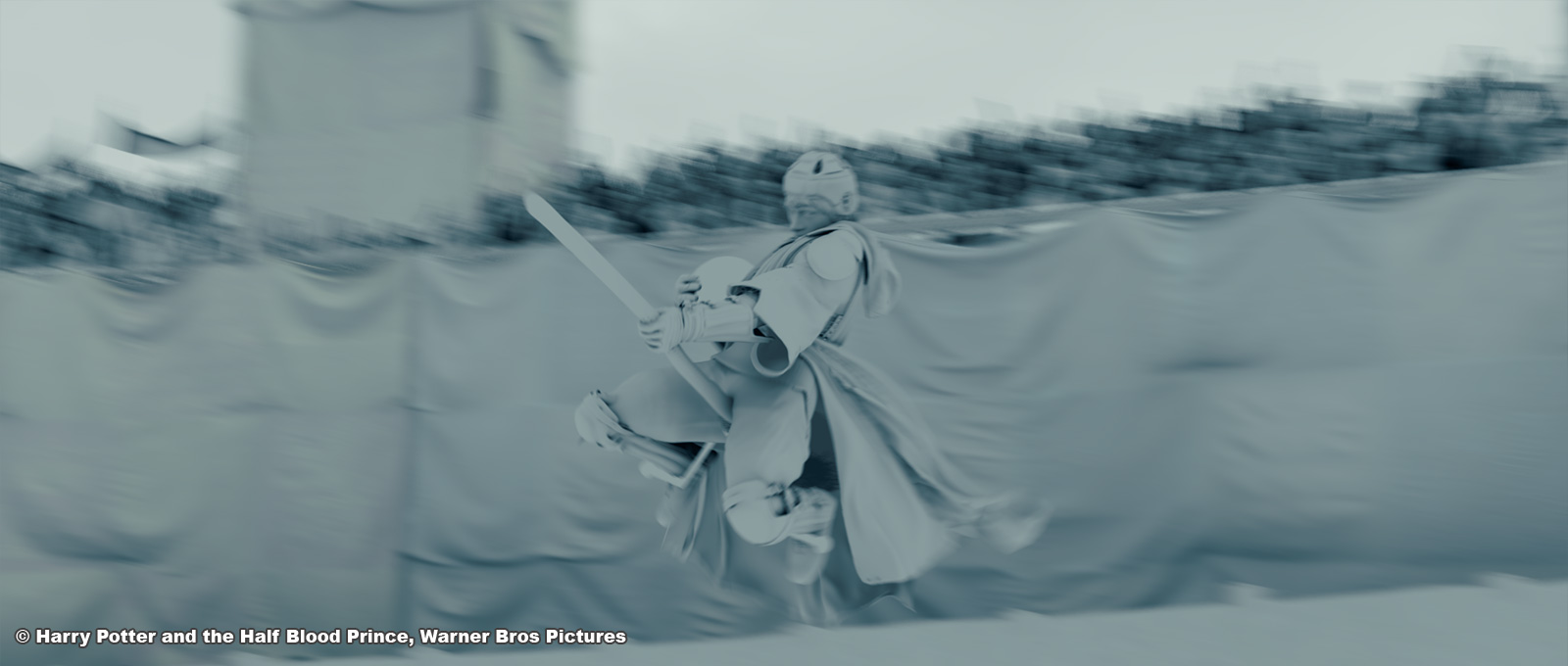 |
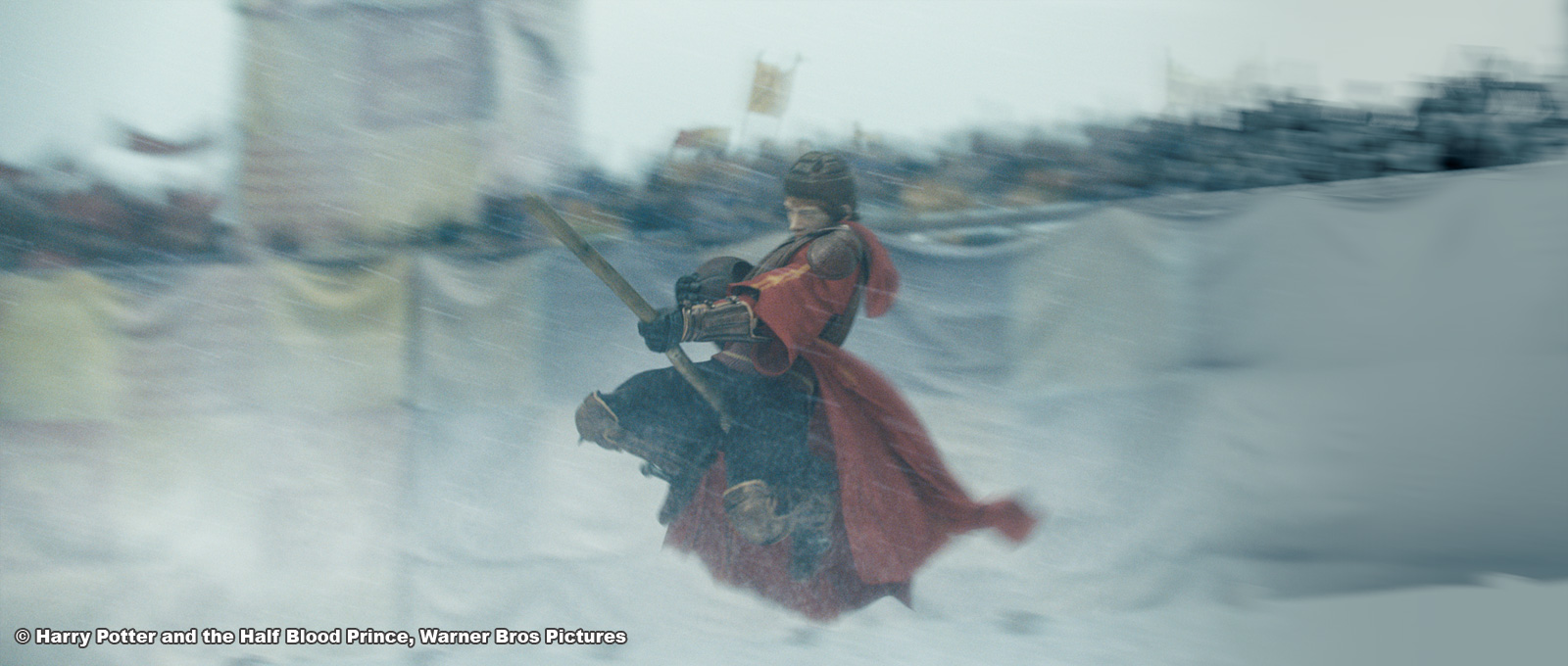 |
Other challenges on this show?
As I said earlier, Ginny’s barrel roll gave us some grief. We work on this shot for about six months to create the most realistic character possible. Working out all the details from the eyes to the hair. For a while she looked good, but she didn’t quite looked like herself. We ended up making it, but it was a battle. The other very complex shots was the train shot. It was a 3000 frames shot and it was complex not in term of technical challenges but more in term of number of elements to put together, about 50 motion control plate had to be combined together with a CG train interior, CG train exterior and CG environment.
What was your best memory on the show?
My best memory? I have a lot, if I must choose one, I will say, it was that day when I was shown the first shot of the match sequence (images below) I asked Guillaume Rocheron, my CG Sup at the time, when exactly we would replace the actor by the CG version and he told me that it was already the case. I looked again and it was the CG double on screen and I didn’t notice. It was a good sign. It was when we realised that we would make it. The client didn’t notice either.
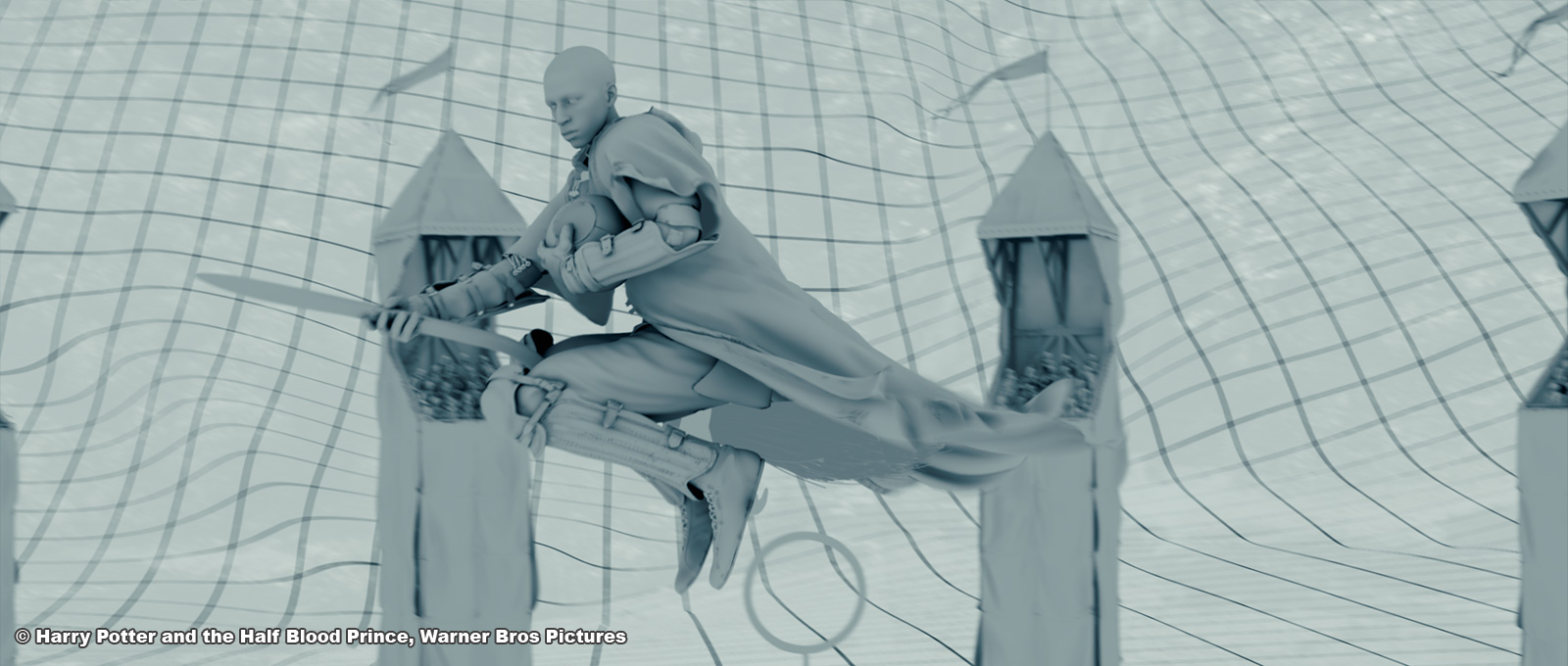 |
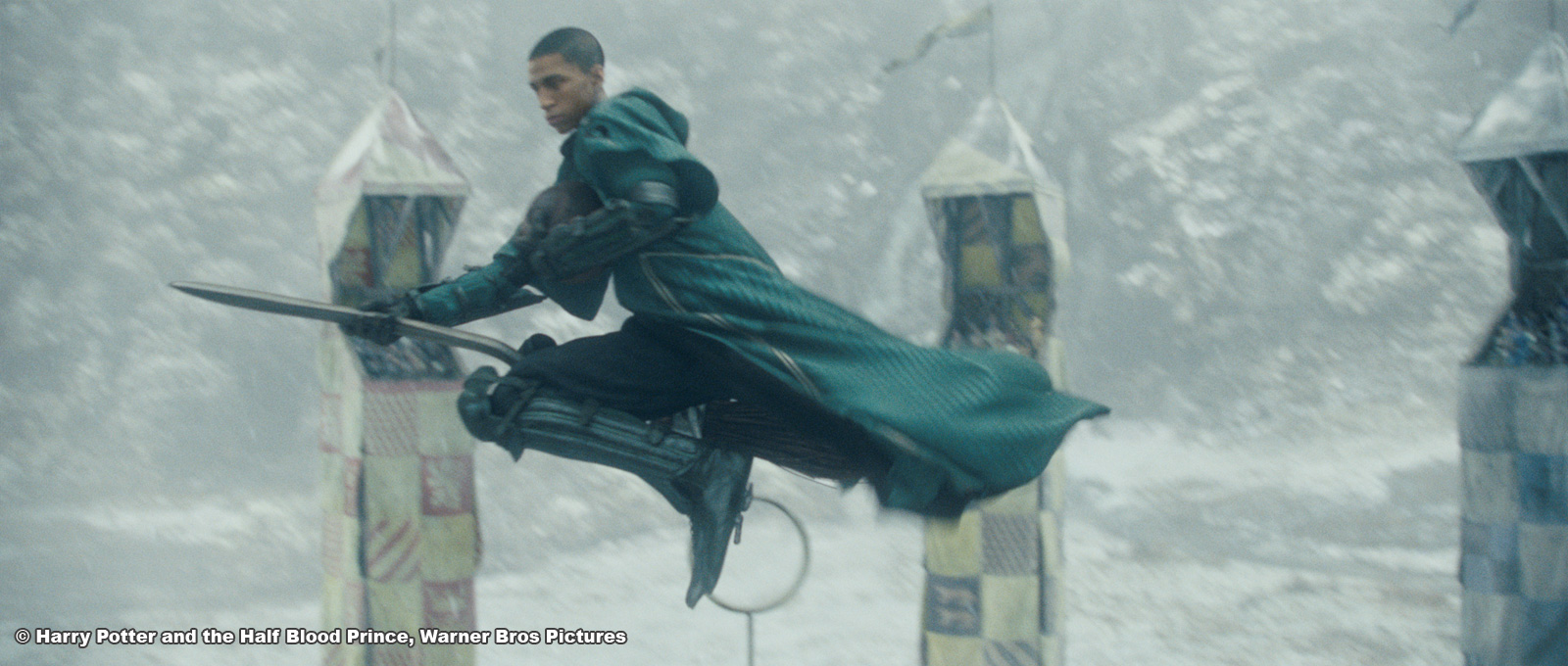 |
Why did you leave Paris to go to London?
It was after September, 11. There wasn’t much work in Paris and when there was it wasn’t very challenging, I always wanted to work in London and get involved in the big Hollywood projects. But mainly, because they called me (Laughs).
Did you get offers from Paris since you’re in London?
No, not one. They don’t like me anymore. (Laughs).
Which are the four movies that inspired you to work in this industry?
SEVEN SAMURAIS always been my favorite film of all time, when I was a kid we were watching loads of old french or american classics. It would be difficult to chose specific movies. I like films in general. From the SEVEN SAMURAIS to FERRIS BUELLER’S DAY OFF going through BACK TO THE FUTURE…
Thank you for your time.
It was nice answering your questions. Thanks.
WANT TO KNOW MORE?
– The Moving Picture Company: Dedicated page for HARRY POTTER AND THE HALF-BLOOD PRINCE on MPC’s website.
© Vincent Frei – The Art of VFX – 2010







Merci encore pour cette formidable interview!
Je suis particulièrement fan des livres.
La warner devrait mettre ton blog dans les bonus du film car c’est 100 fois plus intéressant que leurs blablabla.
Bonne journée 🙂
J’adore ces interviews qui vont à fond dans les détails. Merci!!